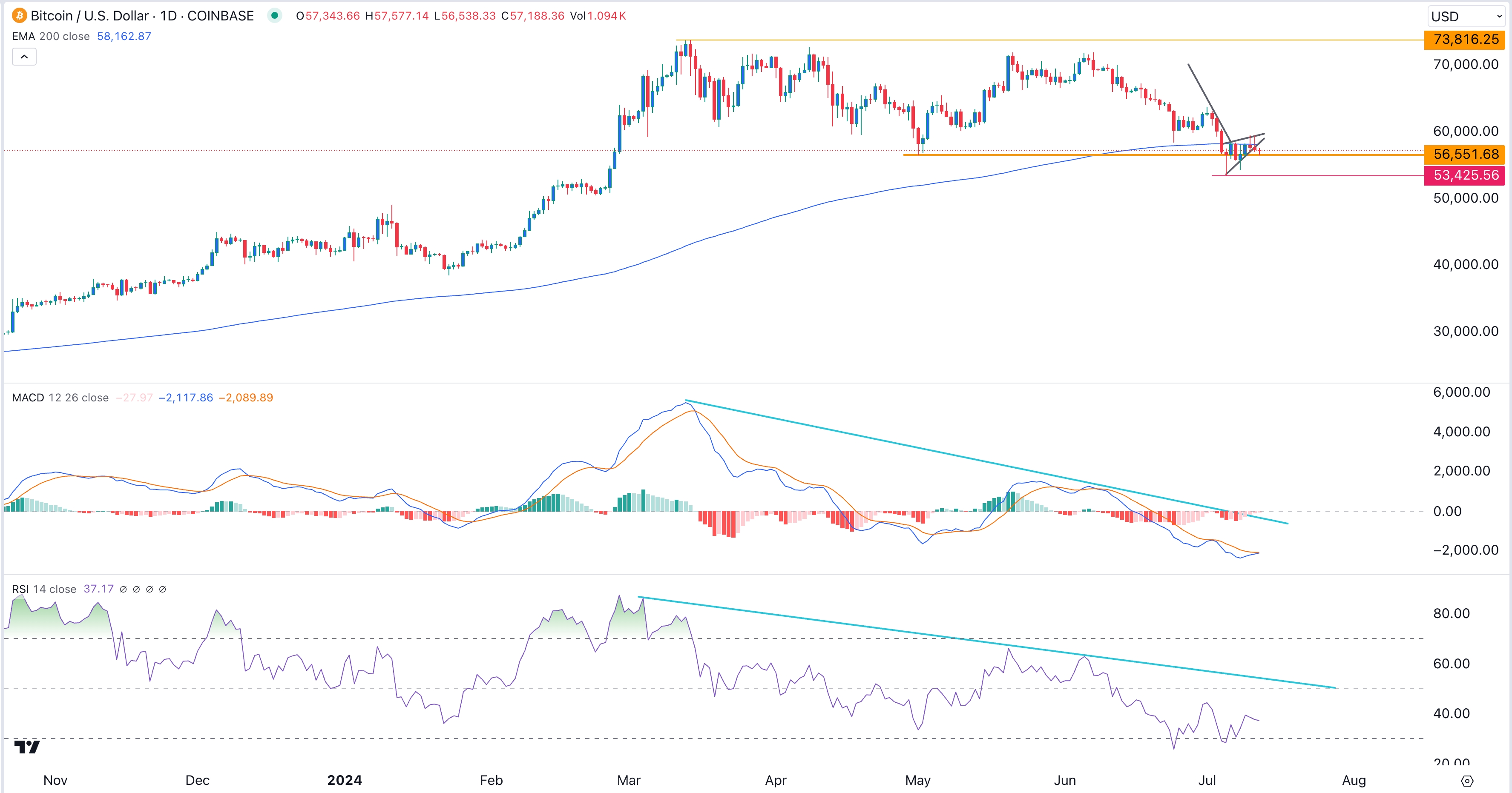The US published encouraging consumer inflation data on Thursday, triggering an immediate rise in Bitcoin’s price and then a sharp pullback. Bitcoin rose to $59,300 and then recoiled to about $57,000. Other altcoins like Ether, Solana, and Avalanche had similar price actions.
On the other hand, gold approached its all-time high while popular exchange-traded funds (ETF) like the Invesco QQQ (QQQ), Schwab US Dividend Equity (SCHD), and the SPDR S&P 500 (SPY) rose by over 1%.
Bitcoin wavered after the US CPI data
The US data revealed that the headline and core inflation dropped modestly in June. The headline CPI moved from 3.3% to 3.0%, while the core CPI, excluding volatile food and energy prices, fell to 3.2%.
These numbers were good for risky assets like Bitcoin, stocks, and commodities because they increased the chances that the Federal Reserve would start cutting interest rates as soon as September this year.
Interest rate cuts will likely lead to a rotation from high-yielding assets like money market funds (MMF) to risky ones like Bitcoin and stocks. This is notable since these funds hold a record $6.1 trillion in assets.
There are three main reasons why Bitcoin has decoupled from the QQQ, SPY, and SCHD ETFs. First, the inflation numbers came when the German government was dumping coins in exchanges.
As Anthony Pompliano noted to CNBC this week, a large supply of an already illiquid asset will always lead to price dislocation. That happens because this supply is met with skeptical buyers, which explains why Bitcoin exchange balances have risen. Bitcoin miners’ capitulation also plays a role in this.
US earnings season is coming
Second, these funds rose because of the upcoming earnings season on Friday when companies like JPMorgan, Wells Fargo, and Citigroup releases. Most analysts believe that this will be a strong season. Data by FactSet shows that the estimated earnings growth will be 8.8%, the biggest increase in over 4 years.
Third, the SCHD, QQQ, and SPY funds have jumped because analysts are upbeat about US equities this year. Most analysts – except Morgan Stanley’s Mike Wilson– have boosted their S&P 500 index forecast for the year. The average estimate is that the index will end the year above $5,800.

Finally, traders are still concerned about Bitcoin’s double-top chart pattern, which is often a bearish sign. To make matters worse, as shown above, Bitcoin has also dropped below the 200-day moving average and formed a small rising wedge pattern.
Oscillators like the Relative Strength Index (RSI) and MACD have formed a bearish divergence. These are all bearish signs that could lead to more downside.













